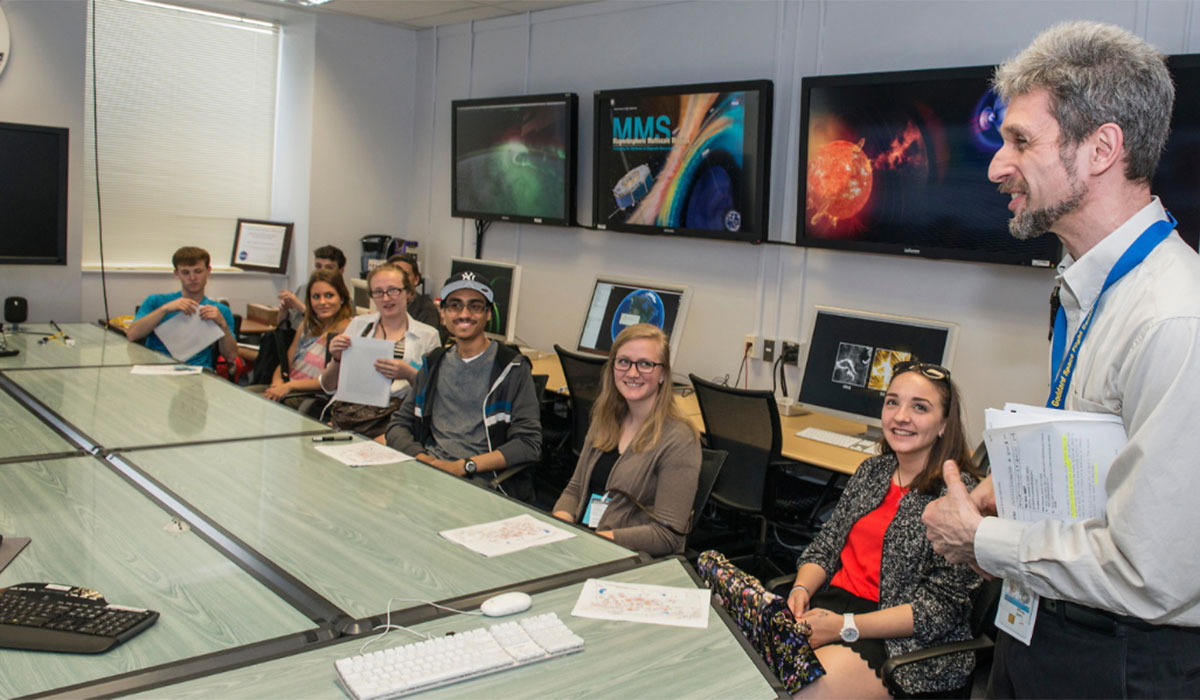
Space Weather and Space Physics are unique opportunities for students who are interested in a deeper understanding of the basic physical principles of space plasma physics and their applications in modern science and technology.
Space weather presents a growing hazard to human technologies and society by disrupting satellite communications and navigation systems, damaging power grids, exposing astronauts to a harsh radiation environment, and causing an array of other detrimental effects in space and on the ground. Understanding the physics of such events has become a priority of NASA science programs, and a growing priority in space research employment. Eruptive events in the solar corona, such as solar flares, prominence eruptions, and coronal mass ejections, are known to drive space weather effects at Earth via a variety of energy conversion processes. Linking the observed space weather patterns with their solar sources, and producing reliable operational space weather forecasts, are important problems which will greatly influence future progress in telecommunications and space exploration, including upcoming manned interplanetary missions.
The Department of Physics is joining forces with several leading U.S. universities in developing undergraduate space weather curricula for educating next-generation scientists and engineers who will attack these challenging problems. SWSP is an interdisciplinary program combining several branches of physics (electrodynamics, statistical mechanics, fluid mechanics) with modern methods of space observations and cutting-edge achievements in data mining and computer forecasting. Students will be also offered hands-on experience with space weather forecasting tools available at Catholic University's Space Weather Center through its collaboration with NASA Goddard Space Flight Center.
